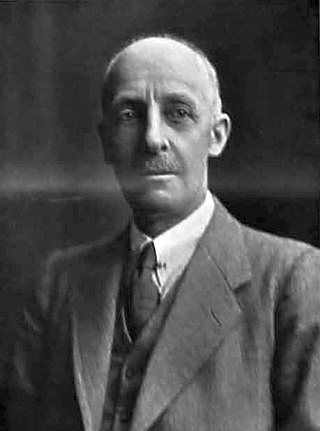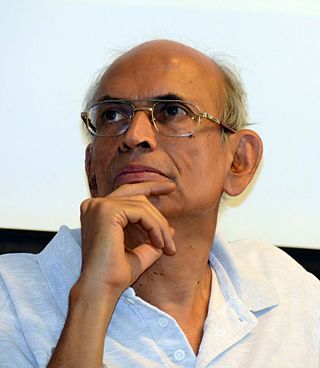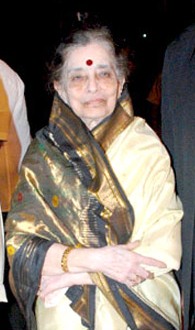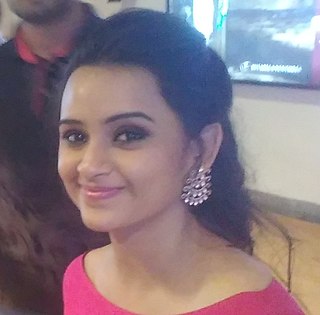Related Research Articles

Porbandar is a city and the headquarters of Porbandar district in the Indian state of Gujarat. It is the birthplace of Mahatma Gandhi and Sudama. It was the former capital of the Porbandar princely state. Porbandar and Chhaya are the twin cities of each other and both cities are jointly governed by Porbandar–Chhaya Municipal Corporation.

Savitribai Phule Pune University (SPPU), formerly the University of Pune, is a public state university located in the city of Pune, India. It was established in 1949, and is spread over a 411 acres (1.66 km2) campus in the neighbourhood of Ganeshkhind. The university houses 46 academic departments. It has about 307 recognised research institutes and 612 affiliated colleges offering graduate and under-graduate courses. Savitribai Phule Pune University Ranked 12th NIRF Ranking in 2022.

Sir Gilbert Thomas Walker was an English physicist and statistician of the 20th century. Walker studied mathematics and applied it to a variety of fields including aerodynamics, electromagnetism and the analysis of time-series data before taking up a teaching position at the University of Cambridge. Although he had no experience in meteorology, he was recruited for a post in the Indian Meteorological Department where he worked on statistical approaches to predict the monsoons. He developed the methods in the analysis of time-series data that are now called the Yule-Walker equations. He is known for his groundbreaking description of the Southern Oscillation, a major phenomenon of global climate, and for discovering what is named after him as the Walker circulation, and for greatly advancing the study of climate in general. He was also instrumental in aiding the early career of the Indian mathematical prodigy, Srinivasa Ramanujan.

The Madden–Julian oscillation (MJO) is the largest element of the intraseasonal variability in the tropical atmosphere. It was discovered in 1971 by Roland Madden and Paul Julian of the American National Center for Atmospheric Research (NCAR). It is a large-scale coupling between atmospheric circulation and tropical deep atmospheric convection. Unlike a standing pattern like the El Niño–Southern Oscillation (ENSO), the Madden–Julian oscillation is a traveling pattern that propagates eastward, at approximately 4 to 8 m/s, through the atmosphere above the warm parts of the Indian and Pacific oceans. This overall circulation pattern manifests itself most clearly as anomalous rainfall.

Madhav Dhananjaya Gadgil is an Indian ecologist, academic, writer, columnist and the founder of the Centre for Ecological Sciences, a research forum under the aegis of the Indian Institute of Science. He is a former member of the Scientific Advisory Council to the Prime Minister of India and the Head of the Western Ghats Ecology Expert Panel (WGEEP) of 2010, popularly known as the Gadgil Commission.

The Indian Institute of Tropical Meteorology (IITM) is a scientific institution based in Pune, Maharashtra, India for expanding research on the Ocean-Atmosphere Climate System required for the improvement of Weather and Climate Forecasts. IITM focuses on research in tropical meteorology and climate science, it functions as a national center for basic and applied research in monsoon meteorology. It is an autonomous institute of the Ministry of Earth Sciences, Government of India.

Mrinal Deo-Kulkarni is an Indian actress and director known for her work in several films and television productions. She is best known for her role as Mirabai in Doordarshan's Mirabai and as an angel on Star Plus's Son Pari.
Teleconnection in atmospheric science refers to climate anomalies being related to each other at large distances. The most emblematic teleconnection is that linking sea-level pressure at Tahiti and Darwin, Australia, which defines the Southern Oscillation. Another well-known teleconnection links the sea-level pressure over Iceland with the one over the Azores, traditionally defining the North Atlantic Oscillation (NAO).

Jagadish Shukla is an Indian meteorologist and Distinguished University Professor at George Mason University in the United States.

The North American monsoon, variously known as the Southwest monsoon, the Mexican monsoon, the New Mexican monsoon, or the Arizona monsoon is a term for a pattern of pronounced increase in thunderstorms and rainfall over large areas of the southwestern United States and northwestern Mexico.

Shruti Marathe is an Indian actress known for her works in Marathi and Tamil films and television.

Dhananjay Ramchandra Gadgil, also known as D. R. Gadgil, was an Indian economist, institution builder and the vice-chairman of the Planning Commission of India. He was the founder Director of the Gokhale Institute of Politics and Economics, Pune and the author of the Gadgil formula, which served as the base for the allocation of central assistance to states during the Fourth and Fifth Five Year Plans of India. He is credited with contributions towards the development of Farmers' Cooperative movement in Maharashtra. The Government of India recognised his services by issuing a commemorative postage stamp in his honour in 2008.

The Monsoon of South Asia is among several geographically distributed global monsoons. It affects the Indian subcontinent, where it is one of the oldest and most anticipated weather phenomena and an economically important pattern every year from June through September, but it is only partly understood and notoriously difficult to predict. Several theories have been proposed to explain the origin, process, strength, variability, distribution, and general vagaries of the monsoon, but understanding and predictability are still evolving.

Sulochana Mahadev Kadam, better known as Sulochana Chavan, was an Indian singer who was known for her lavanis in Marathi.

Neha Mahajan is an Indian actress and model known for her works predominantly in Marathi and Hindi films, in addition to Marathi theatre. Mahajan made her debut in 2012, with the English-language Canadian-British production Midnight's Children directed by Deepa Mehta.
Gadgil is a Chitpavan brahmin surname from Maharashtra, India.
Pancheti Koteswaram was an Indian meteorologist, hydrologist, atmospheric physicist and the Director-General of Observatories of Government of India. He was a professor at University of Chicago, University of Hawaii, University of Miami and Tehran University and served as a research associate at National Hurricane Research Laboratory, Miami, and the National Centre for Atmospheric Research, Colorado. A former vice-president of World Meteorological Organization (WMO), Geneva, he was an elected Fellow of the Indian Academy of Sciences, Indian National Science Academy and the Andhra Pradesh Academy of Sciences. The Government of India awarded him the third highest civilian honour of the Padma Bhushan, in 1975, for his contributions to science.

Bhupendra Nath Goswami is an Indian meteorologist, climatologist, a former director of the Indian Institute of Tropical Meteorology (IITM). and a Pisharoty Chair Professor at the Indian Institute of Science Education and Research. He is known for his researches on the Indian monsoon dynamics and is an elected fellow of all the three major Indian science academies viz. Indian National Science Academy, Indian Academy of Sciences, and the National Academy of Sciences, India as well as The World Academy of Sciences. The Council of Scientific and Industrial Research, the apex agency of the Government of India for scientific research, awarded him the Shanti Swarup Bhatnagar Prize for Science and Technology, one of the highest Indian science awards for his contributions to Earth, Atmosphere, Ocean and Planetary Sciences in 1995.
Ganapati Shankar Bhat is an Indian geophysicist and the chairman of the Centre for Atmospheric and Oceanic Sciences of the Indian Institute of Science. He is known for his studies on atmospheric convective processes and air-sea interactions and is an elected fellow of the Indian Academy of Sciences. The Council of Scientific and Industrial Research, the apex agency of the Government of India for scientific research, awarded him the Shanti Swarup Bhatnagar Prize for Science and Technology, one of the highest Indian science awards for his contributions to Earth, Atmosphere, Ocean and Planetary Sciences in 2002.

Parna Pethe is an Indian film & theatre actress who has appeared in many Marathi films and experimental plays.
References
- ↑ "Indian Fellow: Sulochana Gadgil". Indian National Science Academy. Archived from the original on 16 March 2014. Retrieved 25 November 2012.
- ↑ "Sikka, D., and S. Gadgil, 1980: On the maximum cloud zone and the ITCZ over Indian longitudes during the Southwest Monsoon." Monthly Weather Review, vol.108, 1840-1853". Monthly Weather Review. 108: 1840. 1980. doi: 10.1175/1520-0493(1980)108<1840:OTMCZA>2.0.CO;2 . ISSN 1520-0493.
- ↑ "Sulochana Gadgil: Research Interests". IISc. Retrieved 25 November 2012.
- 1 2 "Interview with Sulochana Gadgil". WMO. Retrieved 9 September 2013.
- ↑ Gadgil, Sulochana. "My tryst with the Monsoon" (PDF). Indian Academy of Sciences. Retrieved 25 November 2012.